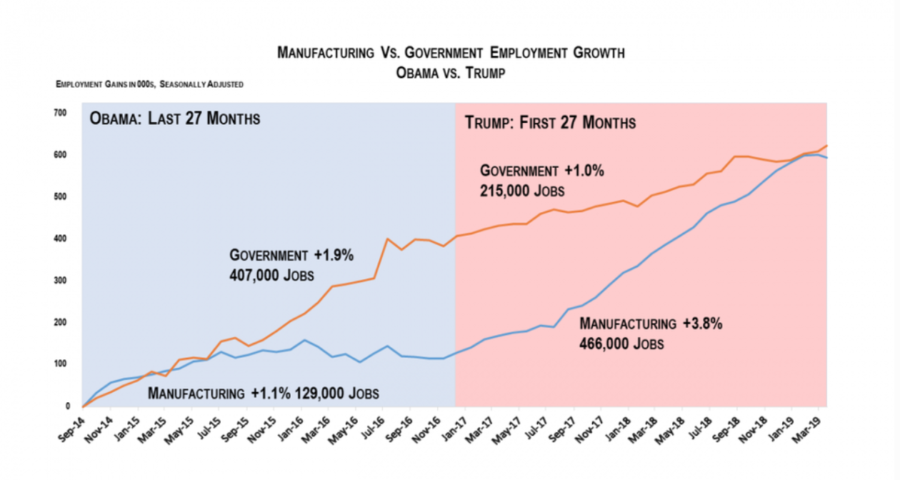
The U.S. Bureau of Labor Statistics released its March employment report this morning, estimating that employers added 196,000 nonfarm jobs. The official unemployment rate remained unchanged at 3.8%.
The federal bureau revised its January jobs estimate up by 1,000 to 312,000 jobs and revised February’s estimate upwards 13,000 to 33,000, for a total of 14,000 more nonfarm jobs in the first two months of the year than previously reported.
Manufacturing employment recorded a dip of 6,000 jobs, for only the second monthly loss during the Trump presidency.
Overall, comparing President Trump’s first 27 months of key employment data to the last 27 months under President Obama shows a continuation of employment growth, the kind often seen in the mature stages of a business cycle, with 5,860,000 nonfarm jobs added during Obama’s last 27 months compared to 5,373,000 under Trump’s first 27 months.
Private sector employment also compares similarly over the same period, with 5,453,000 jobs added to private sector payrolls in Obama’s last 27 months in office compared to 5,158,000 during a comparable period under Trump.
However, a substantial difference can be seen in the job gains in the manufacturing sector compared to the government employment sector (federal, state and local) under the two administrations, with government at all levels adding 407,000 jobs in Obama’s last 27 months compared to 215,000 jobs since Trump took office. Manufacturing employment was in stark contrast, with manufacturers adding only 129,000 jobs during Obama’s last 27 months compared to 466,000 jobs since Trump took office, implementing a series of deregulatory measures and tax cuts that have encouraged industrial production and investment.
Comparatively, during Trump’s watch, the economy has added two manufacturing jobs for each job added in government while under Obama’s last 27 months, about three government jobs were added for each manufacturing job.